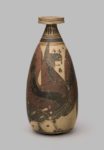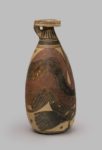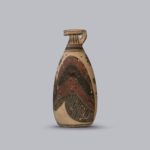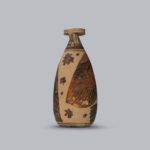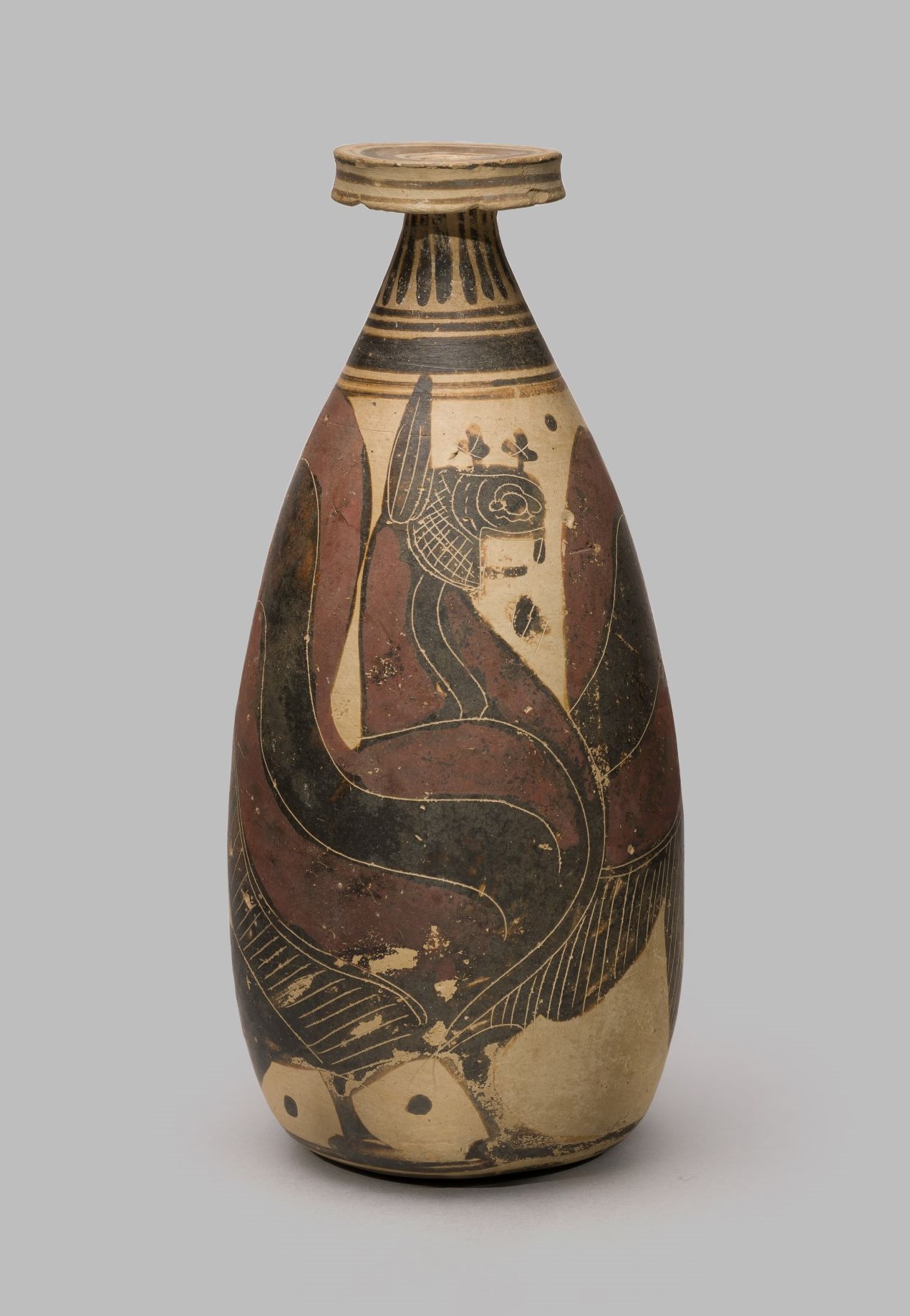
Alabastron [Gr49]
Late Corinthian, Near the Torino Painter, c. 550 BC
Painted terracotta (h. 22 cm, d. 10.3 cm)
A griffin with outstretched wings.
An alabastron is a flask for perfume or massage oils. Vases of this shape were first made in Greece during the 7th century, inspired by stone vessels imported from Egypt (see Eg61 for a later example of an Egyptian stone alabastron). Etymologically, the word ‘alabastron’ has been linked to the Egyptian town of Bast and to the goddess Bastet. It is not clear whether the vase form was named after the type of stone from which Egyptian examples were often made (i.e. alabaster), or whether the stone itself was named after this type of vase.
Griffins are one of the hybrid creatures of Greek mythology, part lion and part eagle. The animal on this vase has none of the leonine features, but is still clearly identifiable as a griffin from its distinctive head, with long ears and knobs on the forehead. Like the sphinx and the siren, griffins first appeared in Greek art around 700 BC. They were copied from objects imported from the Near East, where there was a long tradition of depicting such creatures.
Literature: J. Falconer and T. Mannack, Corpus Vasorum Antiquorum: Great Britain, Fascicule 19: Winchester College (Oxford, 2002), p. 15, plate 11.10-12; A. Amyx, Corinthian vase-painting of the Archaic Period (Berkeley, 1988), 243.1, 295.2; C.A. Picón, Classical Antiquities from Private Collections in Great Britain (London, 1986), p. 18 (no. 7), plate II; J.L. Benson, Die Geschichte der korinthischen Vasen (Basel, 1953), p. 56, list 97, no. 2; H.A. Payne, Necrocorinthia, a study of Corinthian art in the Archaic period (Oxford, 1931), p. 319, no. 1214; Winchester College Memorial Buildings: Department of Classical Art (Winchester, 1909), p. 14 (no. 13)
Exhibited: Sotheby’s, London, 1986
Provenance: From Corinth, at Winchester College by 1909
Location: Treasury, Gallery 3
